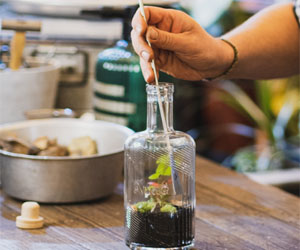


Igniting Creativity And Ambiance In Your Home

In today's fast-paced world, where technology reigns supreme, there's a growing yearning for a return to simpler, more mindful activities. Among these pursuits, the art of homemade candle making stands out as a captivating and therapeutic craft, allowing individuals to immerse themselves in the soothing glow of creativity. Beyond merely providing light, homemade candles have transcended their utilitarian origins to become symbols of ambiance, relaxation, and self-expression. At the heart of this enchanting practice lies a captivating blend of science, artistry, and sensory delight, as we explore the realm of crafting scented and decorative candles.
The Essence Of Homemade Candle Art
Homemade candle art represents the perfect fusion of science and artistry. Crafting a candle from scratch involves understanding the science of wax and wick, but it also encourages artistic expression in choosing colors, shapes, and fragrances. Whether you're a seasoned artisan or a beginner, this craft has something to offer everyone.
Materials And Techniques
Creating homemade candles can be a fulfilling experience. The key materials include wax, fragrance oils, wicks, and coloring agents. The type of wax you choose, like soy, beeswax, or paraffin, affects the candle's texture and burn time. Fragrance oils infuse your candles with enticing scents, from soothing lavender to invigorating citrus. Candle coloring agents provide endless possibilities for personalization.
Homemade candle making involves several techniques, including melting the wax, adding fragrance and color, and pouring the mixture into molds. The cooling and setting process requires patience, as the wax transforms into a solid form, ready to be ignited.
Ambiance And Relaxation
Candles have always been synonymous with creating a warm and inviting atmosphere. The soft, flickering glow of homemade candles can transform any room into a cozy haven. Whether you're looking to enhance a romantic dinner, a relaxing bath, or simply add a touch of charm to your living space, homemade candles can set the mood like nothing else.
Scented candles, in particular, contribute to relaxation and well-being. Aromatherapy candles can infuse your space with calming scents that soothe your senses and alleviate stress. The therapeutic power of a fragrant candle should not be underestimated, as it can be a source of comfort and tranquility.
Self-Expression
Homemade candle art offers a unique canvas for self-expression. As you experiment with different colors, scents, and designs, you can truly let your creativity shine. Whether you're crafting candles for yourself or as gifts for loved ones, each piece becomes a reflection of your personal style and taste.
Candles can also be symbolic. They can represent warmth, love, or remembrance. Crafting a candle with a particular purpose or message in mind adds depth to this art form.
Homemade candle art provides a meaningful and satisfying creative outlet in our modern, technology-driven world. It merges science, artistry, and sensory delight, offering a wide array of options for personalization and self-expression. The allure of homemade candles lies not only in the final product but in the process of creation itself, as it allows individuals to slow down, relax, and ignite their inner artist while brightening their surroundings with the gentle glow of handmade ambiance. Whether you're a seasoned candle maker or just beginning, homemade candle art is a journey of creativity and mindfulness well worth embarking upon.
A Time-Honored Craft With Global Diversity
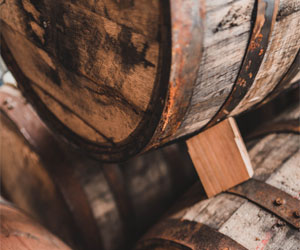 Asian Brewing Traditions: Asia boasts an array of distinctive brewing traditions. Sake, a Japanese rice wine, is an integral part of Japanese culture, with centuries of tradition and craftsmanship. China, on the other hand, has a rich history of brewing rice-based beers like Qingdao, which are now appreciated globally. South Korea is known for its popular rice-based brew, Makgeolli, a traditional and lightly sparkling beverage.
Asian Brewing Traditions: Asia boasts an array of distinctive brewing traditions. Sake, a Japanese rice wine, is an integral part of Japanese culture, with centuries of tradition and craftsmanship. China, on the other hand, has a rich history of brewing rice-based beers like Qingdao, which are now appreciated globally. South Korea is known for its popular rice-based brew, Makgeolli, a traditional and lightly sparkling beverage.
Beer As A Cultural Symbol: Brewing traditions often intertwine with cultural, religious, and social customs. In places like Germany, beer gardens and Oktoberfest celebrations are iconic social gatherings. In Mexico, Day of the Dead festivals include offerings of beer to honor the deceased. Throughout history, beer has played a significant role in ceremonies, rituals, and community bonding.
Global Fusion And Innovation: The brewing world is a global stage where traditions blend and evolve. Brewers often take inspiration from different regions and styles, resulting in fusion brews that incorporate elements of various brewing traditions. For example, the emergence of "Belgo-American" beers combines the brewing traditions of Belgium with the innovative spirit of American craft brewing.
Brewing Traditions In The Modern Era: In today's interconnected world, brewing traditions are shared and celebrated globally. The rise of international beer festivals, beer competitions, and the craft beer movement is a testament to the enduring appeal of brewing.

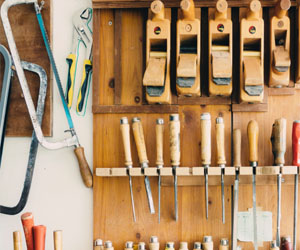
Strategies For Success
 Stress: Constantly trying to meet tight deadlines and fulfill numerous commitments can lead to elevated stress levels. This stress can, in turn, affect your overall health, including your sleep, immune system, and emotional well-being.
Stress: Constantly trying to meet tight deadlines and fulfill numerous commitments can lead to elevated stress levels. This stress can, in turn, affect your overall health, including your sleep, immune system, and emotional well-being.
Burnout: A demanding schedule, when not managed properly, can lead to burnout - a state of physical, emotional, and mental exhaustion. Burnout can negatively impact your performance, creativity, and enthusiasm for life.
Cultivating Wine's Essence
 Pruning: Pruning is a critical aspect of vineyard management, as it shapes the vines and influences the quality of the fruit. Pruning helps control the yield of the vine, ensuring that it produces a balanced crop with optimal grape ripeness. The timing and precision of pruning are essential to the health of the vines and the quality of the grapes.
Pruning: Pruning is a critical aspect of vineyard management, as it shapes the vines and influences the quality of the fruit. Pruning helps control the yield of the vine, ensuring that it produces a balanced crop with optimal grape ripeness. The timing and precision of pruning are essential to the health of the vines and the quality of the grapes.
Pest And Disease Control: Protecting the vineyard from pests and diseases is essential for a successful harvest.
Unearthing Value In Vintage And Thrifted Finds
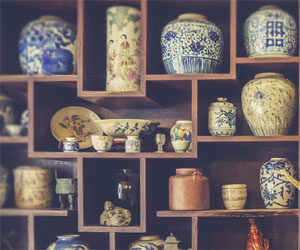 Unique Finds: Secondhand treasures are unique and distinct from mass-produced, contemporary goods. Vintage items often feature designs, craftsmanship, and aesthetics that are no longer readily available in modern markets.
Unique Finds: Secondhand treasures are unique and distinct from mass-produced, contemporary goods. Vintage items often feature designs, craftsmanship, and aesthetics that are no longer readily available in modern markets.
Quality Craftsmanship: Many secondhand items were created during eras when quality and durability were highly valued. These pieces often exhibit superior craftsmanship, making them appealing to those who appreciate well-made goods.
From Seed To Harvest
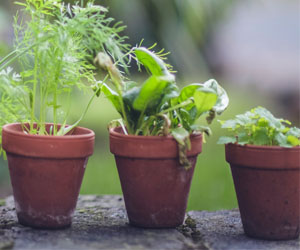 Soil Preparation
Soil Preparation
Prepare the soil by ensuring it is well-draining and rich in organic matter. Herbs generally prefer slightly alkaline soil with good aeration. To improve soil quality, incorporate compost or well-rotted organic matter.
Planting Techniques
When planting herbs, pay attention to spacing. Different herbs have varying requirements for space between plants. Proper spacing allows air circulation and minimizes the risk of disease.
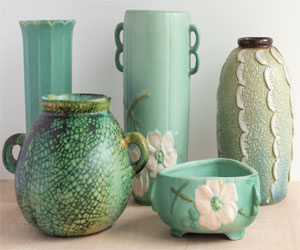 Handbuilding: Handbuilding is one of the most fundamental and versatile techniques in pottery. It involves using the hands to shape the clay. This can be done through techniques such as pinching, coiling, and slab-building. Pinching entails squeezing and forming the clay, coiling is the process of building up the form with clay ropes, and slab-building involves using flattened sheets of clay to construct objects. Handbuilding allows for a great deal of artistic expression and often results in unique, irregular forms.
Handbuilding: Handbuilding is one of the most fundamental and versatile techniques in pottery. It involves using the hands to shape the clay. This can be done through techniques such as pinching, coiling, and slab-building. Pinching entails squeezing and forming the clay, coiling is the process of building up the form with clay ropes, and slab-building involves using flattened sheets of clay to construct objects. Handbuilding allows for a great deal of artistic expression and often results in unique, irregular forms.
Wheel-Throwing: Wheel-throwing, or throwing, is a technique where the potter shapes clay on a rotating wheel. The wheel's motion allows for even and symmetrical forms, making it ideal for creating functional items like bowls, cups, and vases. Potters use their hands and various tools to manipulate the clay as it spins, drawing upon their skill and precision to achieve the desired shape and texture.
Coiling: Coiling is a method where clay ropes or coils are stacked and joined together to create a three-dimensional form. It is one of the oldest pottery techniques, with historical examples dating back thousands of years. Coiling provides both strength and flexibility, making it suitable for constructing larger vessels and sculptural pieces.
Slab-Building: Slab-building entails rolling out flat sheets of clay and cutting them into shapes that are assembled to create an object. It allows for the creation of more geometric and angular forms. Artists can also add texture and design elements to the slabs before assembly, resulting in visually striking pottery.
Crafting Beauty And Functionality
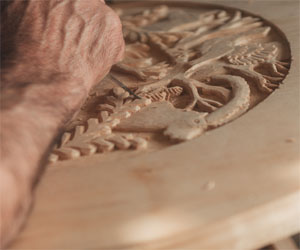 From Functional To Decorative: Creating with wood spans a broad spectrum, from crafting functional items such as furniture, cabinetry, and household objects, to carving intricate sculptures and decorative art pieces. This diversity allows artists to express their creativity across a wide range of styles and purposes.
From Functional To Decorative: Creating with wood spans a broad spectrum, from crafting functional items such as furniture, cabinetry, and household objects, to carving intricate sculptures and decorative art pieces. This diversity allows artists to express their creativity across a wide range of styles and purposes.
Traditional Techniques And Modern Innovations: The art of creating with wood combines traditional techniques handed down through generations with contemporary innovations. Woodworkers may employ age-old joinery methods like dovetails and mortise and tenon, while also using modern power tools for efficiency. This harmonious blend of old and new techniques gives rise to a rich tapestry of creations.
The Joy Of Craftsmanship: Woodworking, in particular, is a craft that places great emphasis on craftsmanship. It demands precision, attention to detail, and an unwavering commitment to quality. Whether it's shaping a piece of wood with hand tools or operating sophisticated machinery, the satisfaction of creating something with one's own hands is immeasurable.
Functional Beauty: One of the most remarkable aspects of creating with wood is the fusion of beauty and functionality. Woodworking, for instance, produces items that serve practical purposes while also being aesthetically pleasing. Chairs are designed for comfort, tables for stability, and cabinets for storage, but each is also a piece of art that enhances living spaces.